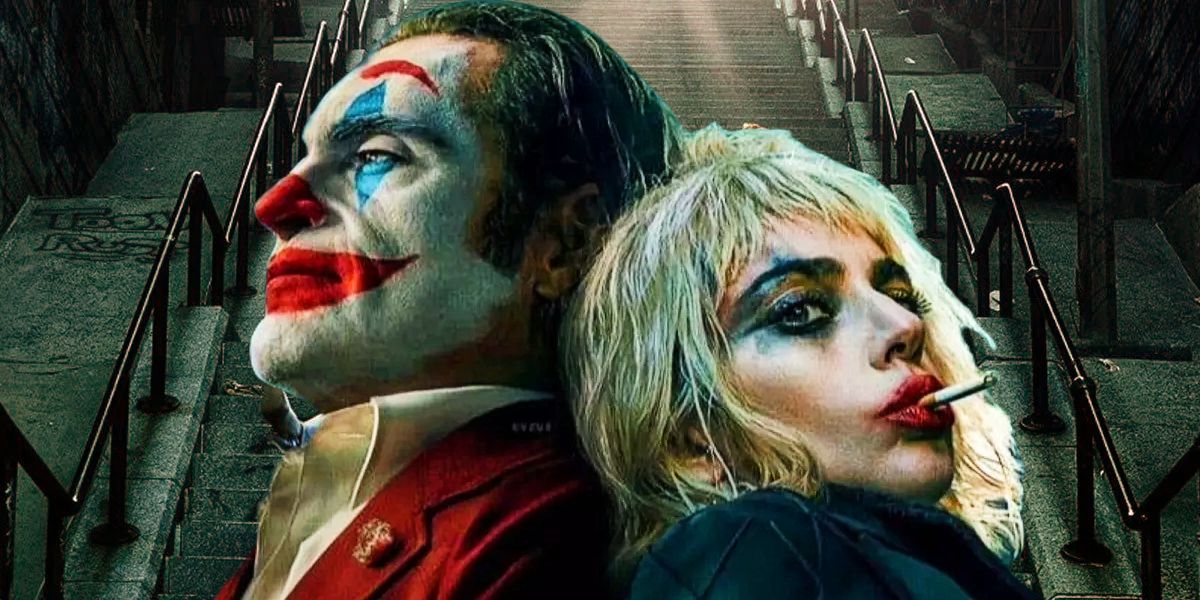Unveiling the Hidden Gem: Joker 2's Scene That Redefines the Movie

Ah, the much-anticipated Joker: Folie à Deux has finally graced the silver screens, but if you were expecting a raucous caper to match its predecessor, you might want to reconsider that popcorn order. Directed by Todd Phillips, this sequel unfolds a mere year after the original, and our dear Arthur Fleck—played with manic intensity by Joaquin Phoenix—is merrily awaiting his murder trial. Meanwhile, his legal team is prodding him toward a plea of insanity, which, let's be honest, may just be the best advice they've given him all week.
Enter stage left: Lee Quinn, a new woman in Arthur's chaotic life, portrayed by none other than the dazzling Lady Gaga. She’s also a patient in Arkham Asylum (because who needs a healthy dating history?) and decides that sprucing up Arthur’s love life might also mean giving his Joker persona a glowing endorsement. Yet, as critics and fans alike have pointed out, this sequel falters on several fronts, becoming more of a lukewarm reheating of ideas than a fresh take on villainy. What happened to that sharp commentary and palpable tension that made the first film feel like the explosive first brush of paint on a blank canvas? One can only scrunch their eyebrows in disappointed contemplation.
Now let's talk courtroom scenes—because where else do you get to witness the juxtaposition of insanity and a deeply sincere testimony? The third act presents us with one of the only moments that may have you instinctively saying, “This is what I came for!” Arthur's trial, featuring the charming Harvey Dent as the prosecutor, evolves into a back-and-forth that feels more like a game of tennis than a fight for Arthur’s life. The stakes increase as Arthur decides to represent himself, which, in any sane universe, would earn at least a raised eyebrow or two—yet here, it feels perfectly natural. If only he’d brought his colorful notes.
And then comes Gary Puddles, Arthur’s former coworker. Oh, Gary—poor Gary—takes the stand, recounting tales of horror involving Arthur, Randall’s untimely exit, and, oddly enough, how he was the one person who didn’t completely lose it around Arthur. In a heart-wrenching twist, we actually witness a flicker of humanity in Arthur as Gary’s words smack him right in the consciousness he’s been so desperately trying to suppress. The great irony? As the Joker persona awakens, Arthur adopts a Southern drawl that nearly lands him in a world of courtroom contempt. Now, that’s the kind of chaos I came to see!
Yet, just when you think Folie à Deux is hitting its stride, it does the cinematic equivalent of tripping over its shoelaces and face-planting back into the murky waters of its own narrative misjudgments. It’s as if, through the course of the film, we’ve been invited to a thrilling masquerade ball only to find ourselves in a dimly lit waiting room, waiting for someone to finish their paperwork. The previous installment expertly built up the Joker; this one flounders in over-explaining Arthur’s woes. It’s like decorating a cake only to find out the frosting is just a thin film of disappointment.
At this point, you might ask, “Where’s the actual Joker in this tale?” The tantalizing spark of mayhem that fans anticipated never truly ignites. Sure, we get a few fleeting glimpses, but would it have been too much to ask for this sequel to revel in its chaotic glory instead of relegating its crown-jewel character to the backseat? The signature humor—the dance of madness that made the Joker iconic—seems lost somewhere between the earnest trials and Arthur's wavering sanity. What happened to the Joker who goes madcap for the sheer fun of it? Let’s face it; the world needs more of that acute absurdity!
Ultimately, Joker: Folie à Deux is like that dessert that looks scrumptious but turns out to taste like cardboard. After a decade of somber, brooding interpretations, can we please bring back the joyful chaos? After all, the Joker is meant to incite an uproar, to wield a sledgehammer of humor across Gotham’s grim landscape. Wouldn’t it be delightful to see the classic version of the Joker re-emerge—a character who not only causes pandemonium but also brings a hearty laugh amid the madness? It’s high time to break free from this cycle of solemnity and allow the Joker to dance once again, even if it means he’s cracking jokes at his own murder trial.
As Joaquin Phoenix’s portrayal bids adieu, perhaps it's time to make room for the playful antagonist. The audiences are primed and ready for a refreshing wave of joy and chaos to wash over the DC landscape. After all, laughter might just be the best medicine—even for a villain.

